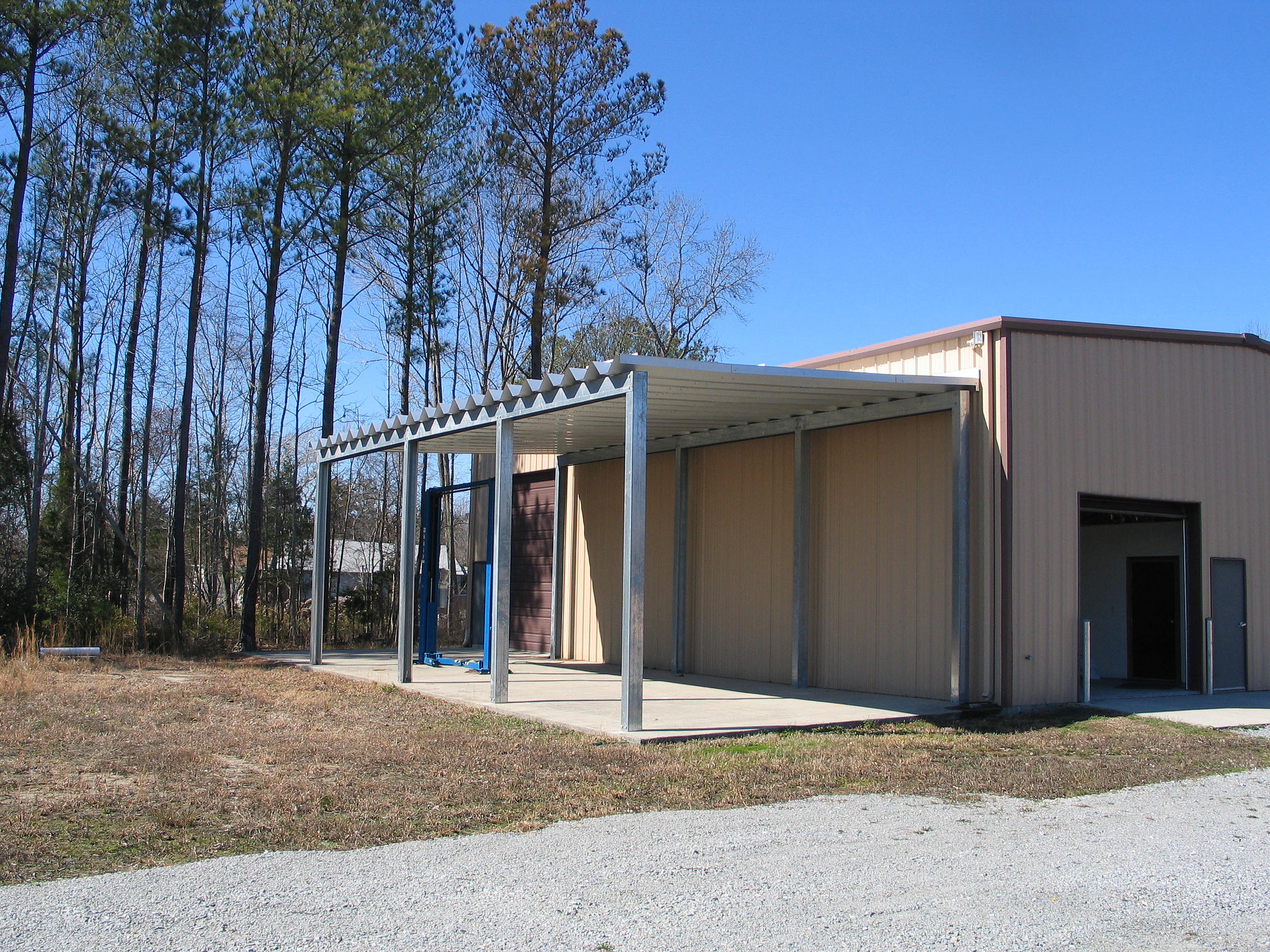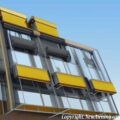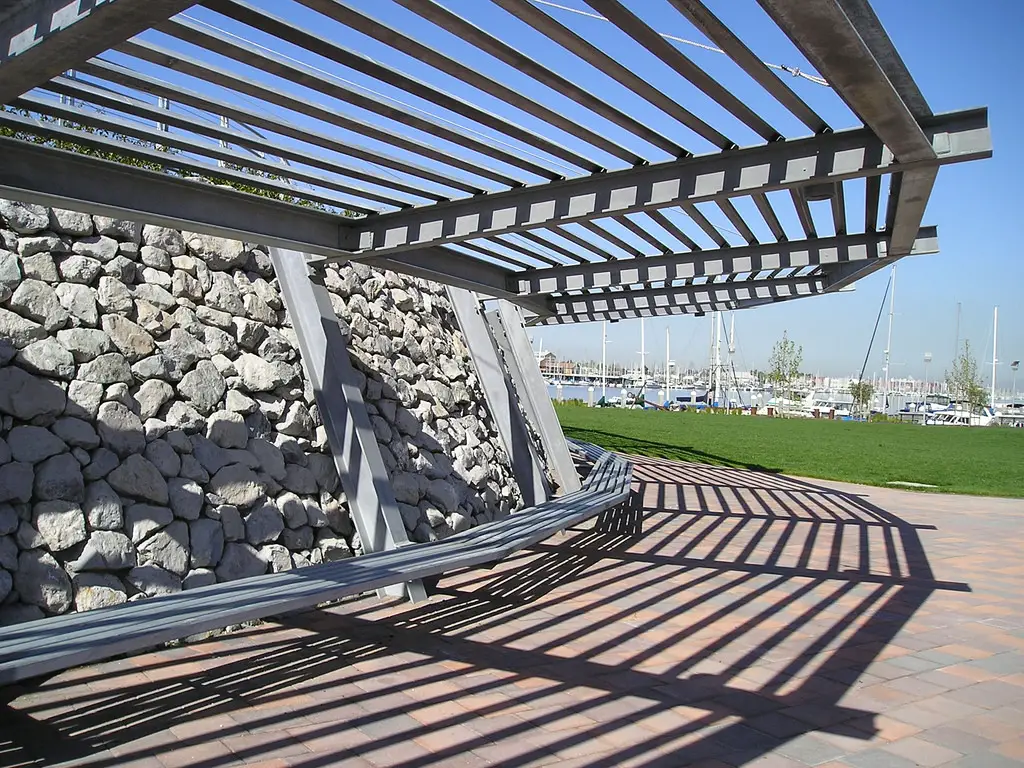Last Updated:July 13, 2024
The Perfect Awning for your Desert Patio
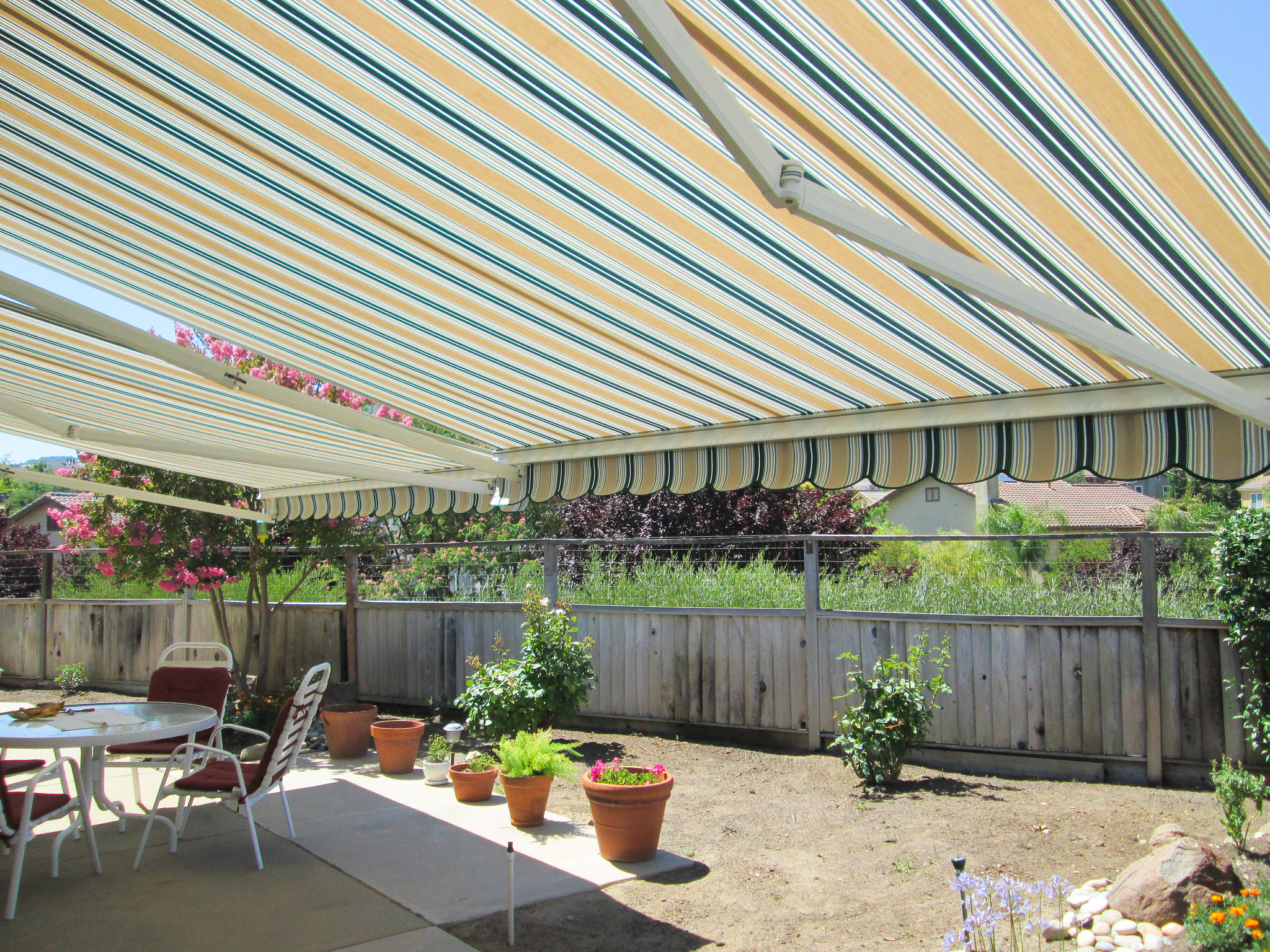
Creative Commons v2.0 - Image from Flickr
It’s June 2018, and the summer heat is starting to really make its presence felt. Our family lives in Phoenix, and we’re already seeing temperatures over 110. While an awning or shade structure is a luxury for many people throughout the country, for those of us that live in Arizona it becomes an absolute necessity if we are going to spend any amount of time outside. Due to our extreme temperatures that can damage some fabrics and frames, and the lack of rain which can lead to cracking, we’ve created some specific suggestions for anyone who is adding an awning here.
Best Colors for Awnings in the Desert
WWe high recommend a striped pastel color for awnings in our area. We’ve spoken to multiple professionals on this topic, and there are quite a few reasons for this.- Light & Pastel Colors Reflect Better – Reflecting the solar rays will lower the heat.
- Striped Patterns Break Monotony – From a style perspective, striped awnings add a bit of style. They work especially well for homeowners who have the traditional desert landscaping.
Best Locations for Awnings in the Desert
Many homeowners don’t want to do a full awning over the entire back of their home. You can get many of energy benefits even with a partial awning as long as you are strategic with its location. You can maximize the shade’s heat mitigation by placing it on the west or south side of the home. The US Department of energy completed studies on this, and found that shade structures on these sides to be 25% more effective than. This is why you also see solar panels primarily on these sides of roofs.We recommend having an awning slightly larger than the patio to provide optimal coverage. The reason is that the sun is rarely straight overhead meaning that the shadow over your patio will move throughout the day. Since you’re unlikely to be moving your patio furniture, you can get the most hours of usable sun protection with a canopy that extends further than the patio. Additionally, you will want to look at the primary time of day that your awning is used and adjust accordingly. Our family normally uses our patio after work so we wanted one that provided the best protection from the afternoon evening sun. The decision around awning placement also heavily influenced our BBQ grill placement and outdoor dining area set.
When deciding on your installation point, try to go outside at that time of day it’ll get most use and determine where the sun is in reference to your patio. If the sun is low in the sky, you will want to compensate by increasing the awning dimension towards that direction.
Best Fabric for Awnings in the Desert
Our top choice for material is solution dyed acrylic which includes Sunbrella and Perennials. This is more expensive than canvas or PVC, and the reason is splurge is that the extreme temperature and dryness may lead to damage to the other fabrics. For coastal climates such as Florida and California, we adore PVC material due to it’s additional water resistance; however, that’s not an issue for homeowners in Arizona. If you are on a budget, and acrylic simply isn’t an option, we prefer canvas over PVC. Canvas awnings can will show signs of wear, and their color will fade; however, they are more resistant to our climate.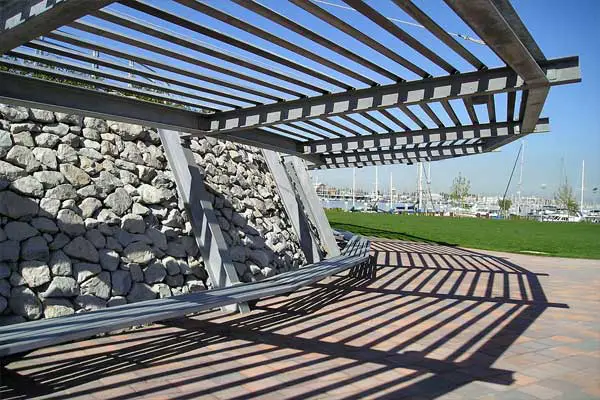 We are not fans of full metal awnings with closed roofs. If you prefer to aluminum or steel awning, we’d recommend one with an open slat roof that which is called “Louvre Roof”. The slats will provide shade and a surprise amount of cooling. As a quick aside, this is due to “The Second Law of Thermodynamics”. Heat will always move to fill any cooler space around it. In this case, the shaded areas created many cooler zones that dissipate the heat evening out the tempeture. On extreme days, an open roof awning can lower the temepture by more than 10 degrees. Additionally, the open design also allows for improved air circulation meaning that open awnings often feel cooler than their closed option.
We are not fans of full metal awnings with closed roofs. If you prefer to aluminum or steel awning, we’d recommend one with an open slat roof that which is called “Louvre Roof”. The slats will provide shade and a surprise amount of cooling. As a quick aside, this is due to “The Second Law of Thermodynamics”. Heat will always move to fill any cooler space around it. In this case, the shaded areas created many cooler zones that dissipate the heat evening out the tempeture. On extreme days, an open roof awning can lower the temepture by more than 10 degrees. Additionally, the open design also allows for improved air circulation meaning that open awnings often feel cooler than their closed option.
Best Height for Awnings in the Desert
The first time I heard this question, I wasn’t sure how to answer it. I had never considered installing the shade higher than normal; however, once I understood the reasoning I am totally on board. Most people install the awning so that the outer edge of the fabric is about 6″ higher than the door frame. This ensures that people won’t bump their head on the frame, and provides some clearance if there is a valance. Once someone suggest installing it a few inches higher, and we tried it once, we were totally hooked.Raising the installation a few inches will create more shaded area between the fabric surface and the cooler air underneath. The fabric itself well get hot from the sun’s rays and that heat will radiate through. When the shade is installed at traditional height, the energy only flows through a couple inches before it is felt by the people underneath. By raising the brackets a few inches, you can double the volume of air that is heated before it reaches our heads. There are some limits and the trade off is that it becomes more susceptible to the sun’s movement throughout the day.
Valances for Awnings in the Desert?
Yes, we are big fans of valances, but we’re not too particular on one style over another. The main reason is they they function as a miniature side awning that provides additional protection from the solar energy.Awning to For Curbside Appeal
Canopies can provide a perfect spot of color that will make a standard builder home feel like a custom design. They can be used to draw the eye to certain aspects of the house and create the appearance of a much larger house.- Tiny Footprint – These awnings provide little shade or cooling. They are more an accent to the house.
- Vinyl or Acrylic Fabric – These two fabrics hold color well, and they resist fading from the sun.
